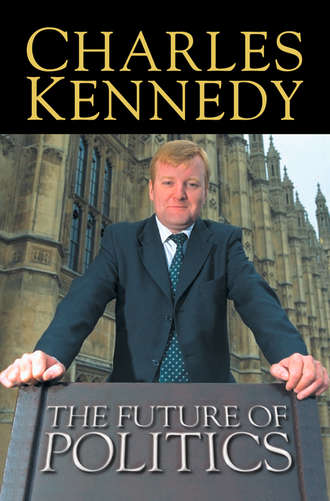
Полная версия
The Future of Politics
Such high-profile cases are outnumbered by the thousands of other violent crimes committed every year. Total recorded crime doubled in the eighties and early nineties. While some property crime declined in the late nineties, violent crime continued to rise. And now the overall crime rate has risen again. In the year to September 1999, recorded crime in this country rose by 2.2 per cent – the first in five years. This general figure masked especially large rises in certain sectors. Most worryingly there was a 6.3 per cent rise in violent crime, and robberies were up by 19 per cent.
There is undeniable evidence that the bulk of crimes are committed by those with the least opportunities: men and women from the most disadvantaged sections of society. It follows that a major weapon in the fight against crime is the pursuit of equality, but we must also not forget the victims. The justice system should always serve the victims’ rights: rights to medical help, counselling, financial compensation, and welfare and legal services. Victims have already suffered at the hands of a criminal. At present, too many go on to suffer at the hands of the system.
When a mugger is sent to prison, he may, arguably, be repaying his debt to society, but he is not, in any sense, making amends to the person he mugged. Even worse for victims is the fact that many offenders are not given any kind of sentence at all. Around three in five young offenders are given a police warning or a caution.
That is why I strongly believe in restorative justice programmes. They take a variety of forms: there is usually a meeting between offenders and victims, but only if victims agree to take part. The aim is to confront offenders with the consequences of their actions, and to make them see the impact they have had on the lives of their victims.
Thames Valley Police have been one of the leading innovators in this area. A couple of years ago they ran a pilot restorative justice scheme in Aylesbury, focusing particularly on young offenders committing shop theft. They held almost 170 restorative cautions or conferences involving the offender, their family and the victim. The initial results were telling. Re-offending fell to 4 per cent, compared to 35 per cent in other parts of the country. Equally importantly, the scheme was popular with people who had been the victims of crime.
The well-worn cry for ‘more Bobbies on the beat’ still rings true, but it only provides a partial solution: it is not, and never has been, a panacea for reducing crime. Nonetheless the role of the police is vital. That is why Labour’s promise to be ‘tough on crime’ rings so hollow now. In opposition they pledged more police officers. After three years in power there were 1,600 fewer police on the beat than when they came to office. That is a dreadful betrayal of the promise they made to the British people.
Конец ознакомительного фрагмента.
Текст предоставлен ООО «ЛитРес».
Прочитайте эту книгу целиком, купив полную легальную версию на ЛитРес.
Безопасно оплатить книгу можно банковской картой Visa, MasterCard, Maestro, со счета мобильного телефона, с платежного терминала, в салоне МТС или Связной, через PayPal, WebMoney, Яндекс.Деньги, QIWI Кошелек, бонусными картами или другим удобным Вам способом.


